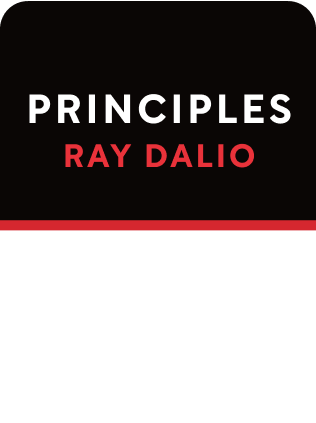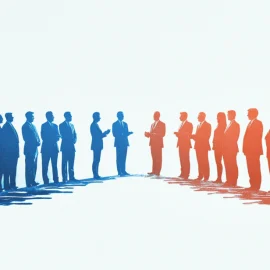

This article is an excerpt from the Shortform summary of "Principles: Life and Work" by Ray Dalio. Shortform has the world's best summaries of books you should be reading.
Like this article? Sign up for a free trial here .
Why is transparency important in the workplace? How does workplace transparency help improve decision-making?
Transparency lets everyone see everything. According to Ray Dalio, everyone in an organization should get access to the full information, rather than having it filtered through other people first. In turn, people with more complete information can make better decisions, and the organization draws on the full power of its people.
Here is why transparency in the workplace is a good thing and when it might not be ideal.
The Benefits of Extreme Transparency
Dalio says that extreme transparency in the workplace is a good thing because:
- It reduces politics and keeps people from having to manage others’ impressions of them, since everything’s out in the open. (Shortform note: Netflix has a similar policy of organizational openness. For example, they tell employees when there’s a possibility that they’ll lose their jobs. Though it’s a risky move because it can distract employees and make them anxious, CEO Reed Hastings believes it’s better than telling people that they’ve lost their jobs without notice.)
- It reduces bad behavior, since it can be monitored. At first, Bridgewater lawyers thought recording everything would be a liability in lawsuits and regulatory action. In reality, extreme transparency limited bad behavior, since people knew they were being watched. Justice is also more likely to prevail because decisions aren’t made behind closed doors, so people can defend themselves when they’re accused of things they didn’t do. (Shortform note: While Netflix doesn’t record all meetings, Hastings does conduct most meetings out in the open.)
Learning is amplified by other people’s experiences. For example, recorded meetings provide training scenarios, where new employees can simulate their responses to real situations. (Shortform note: As Dalio says, Pain + Reflection = Progress. At Netflix, people are encouraged to own up to their mistakes because this not only serves as a teaching tool but also encourages people to take risks and builds trust.)
At Bridgewater, extreme transparency means all meetings and interviews are recorded and made available to the entire team, personality profiles show each person’s strengths and weaknesses, and an app allows everyone to rate each other in real time.
| A Different Approach to Extreme Honesty and Transparency Extreme honesty and transparency can build trust within a team, help people grow, and increase efficiency. Dalio’s version of it seeks to remove emotions from the equation, but the book Radical Candor has a different approach. Author Kim Scott writes that the two crucial components of radical candor are: Caring personally—this means seeing employees as people and not just as workers. Keep in mind that work isn’t “just business,” and recognize that employees have a life outside of work that may be affecting their job performance. Challenging directly—this means giving criticism in private to help improve performance. Scott writes that public criticism (which is the norm at Bridgewater) triggers defensiveness and anxiety within a team. |
Radical Transparency
A key element of Bridgewater’s culture is extreme transparency (what Dalio calls “radical transparency”): Everyone should know how everyone else feels about everything.
When Bridgewater was small, this was easy to manage. But as the company grew, it was impossible to attend all the meetings and listen to all the informal conversations. This threatened extreme transparency because private conversations and office politics could skew the message.
To counter this, Dalio mandated that all meetings be recorded and accessible to anyone who wanted to listen to them. The only exceptions were personally sensitive meetings or confidential proprietary information. Having all meetings accessible allowed people to review why others made the decisions they did and formed valuable case studies for training new employees.
| When Extreme Transparency Is Not Ideal Other companies also employ some form of extreme transparency. For example, Patagonia practices “brand transparency”, allowing customers to access slides and interviews that discuss both good and bad qualities of their products. However, a high level of transparency is not appropriate for every situation (as even Dalio concedes). There are three areas where transparency can create problems: Day-to-day activities where getting more people to weigh in isn’t only unnecessary but may also bog down decision-makingSalary information, which could breed resentment if pay isn’t clearly connected to employees’ performanceCreative work, where privacy can actually help improve performance—a communications agency found that bringing in clients early in the process for the sake of transparency can disrupt idea generation Before introducing more transparency into your team’s workflow, carefully consider the impact. Ask yourself: How could this change slow down productivity or create negative feelings? Do the benefits of this transparency outweigh the costs? |

———End of Preview———
Like what you just read? Read the rest of the world's best summary of Ray Dalio's "Principles: Life and Work" at Shortform .
Here's what you'll find in our full Principles: Life and Work summary :
- How Ray Dalio lost it all on bad bets, then rebounded to build the world's largest hedge fund
- The 5-step process to getting anything you want out of life
- Why getting the best results means being relentlessly honest with everyone you work with






